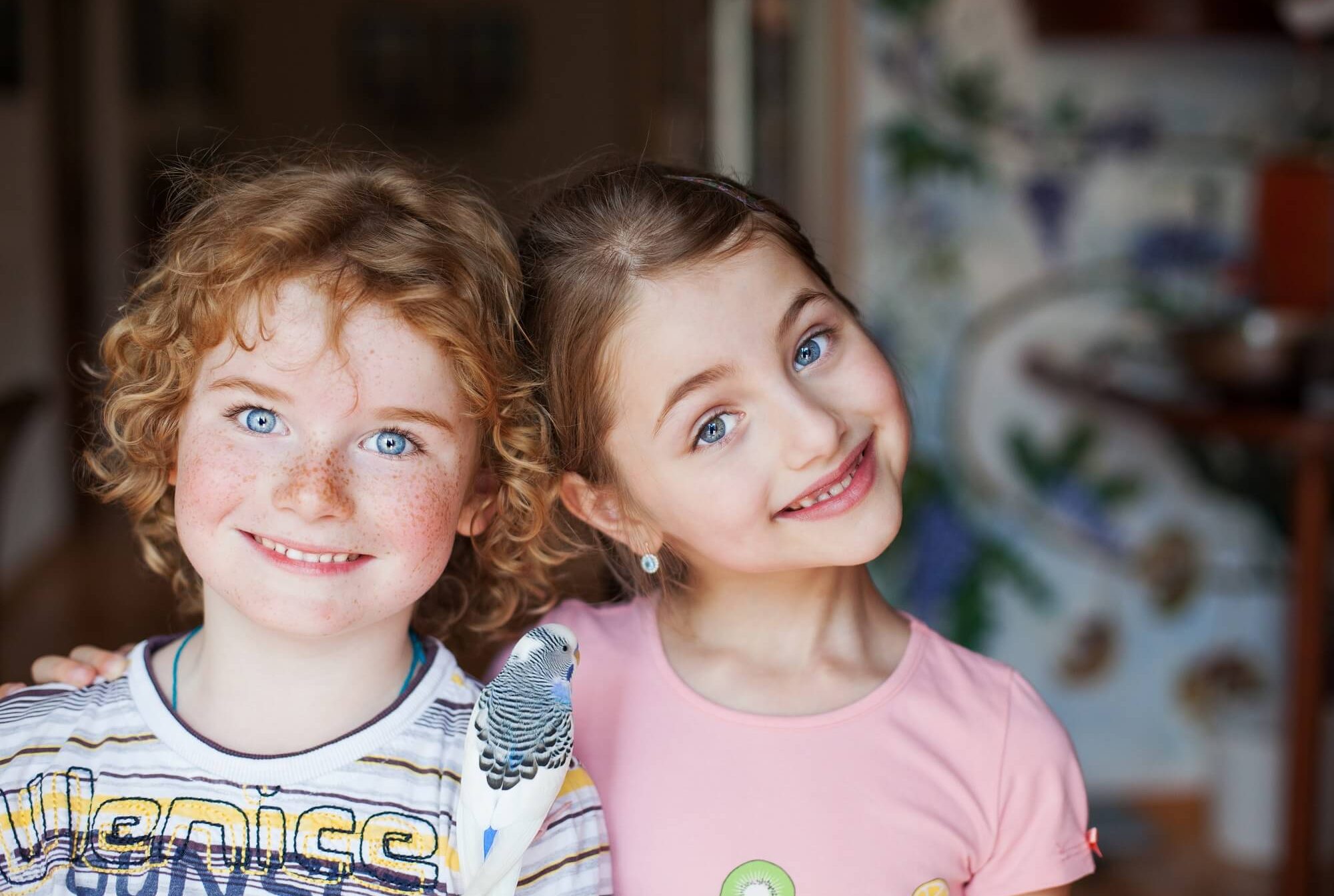
Animals as a Bridge between Siblings
The living room is lively yet peaceful. Two siblings sit on the carpet, watching their budgies flutter freely through the room.
One of them lands on the lamp, the other on the bookshelf. Shortly after, they meet on the branch that the children have set up as their favorite perch.
“Look how they greet each other!” exclaims the younger one. The older one nods: “They’re happy to be together.” A moment of lightness and an example of how closeness works.
💚 Animals Create Closeness – Even between Siblings
Budgies are flock animals. They are curious, sociable, and sensitive to moods.
This is precisely what makes them wonderful teachers of cohesion.
When siblings observe them together, they realize: cooperation succeeds when there is mutual respect.
Tip for Parents:
- Observation phases foster empathy: watching together how birds communicate.
- Share tasks: One child refills water, the other looks after food or fresh greens.
- Talking about behavior (“Why does one fly away when it gets loud?”) helps to understand feelings – including one’s own.
Why Budgies De-escalate Arguments
Birds react immediately to mood: if it gets loud or hectic, they fly up.
If it remains quiet, however, they return – sometimes even very close.
This feedback acts like a mirror for children.
Many families report that arguments become quieter since the budgies arrived.
Small Everyday Tricks:
1. Quiet Signal: “When the budgies are quiet, so are we.”
2. Peace Minute: Observe silently for one minute – like breathing, but together.
3. Talking Time: Take turns describing what you see the animal doing – without interrupting.
In this way, the animal becomes a silent mediator and not the center of an argument.
Learning to Share – without Competition
Even with pet care, the question “Who goes first?” can quickly arise.
However, with a clear plan, it becomes a team game.
Example for Families:
- Monday / Wednesday: Child A feeds, Child B cleans the food bowl.
- Tuesday / Thursday: Swap.
- Weekend: Shared “Budgie Moment” – simply observe or draw.
Children thus experience: being considerate is not a sacrifice – but cooperation.
Everyday Experience
“Our budgies are like little teachers.
When the children get loud, they fly up – and immediately both are quiet.
They laugh and the argument is over.
The birds have shown us how to be considerate without us having to explain it to them.” – Family N., two children (7 and 10 years old)
Growing Together – Step by Step
Animals foster empathy, patience, and mutual understanding.
Children observe, for example, how birds interact with each other, and learn through body language, sounds, and small gestures.
This is how they learn how relationships work: attentively, respectfully, and without many words.
Family Idea:
Create a bird diary together.
Each child draws or describes what they have observed, for example, when the birds are particularly active or what sounds they make.
On the weekend, you can then read your entries together and discover how differently you experienced the same scene.
Conclusion
Budgies show children how coexistence can succeed: with consideration, curiosity, and tenderness. They are not referees, but they change the atmosphere with every movement and every sound. Where they are, communication arises. And sometimes peace. 💚
Read More
My CHIPSI Bird Diary
